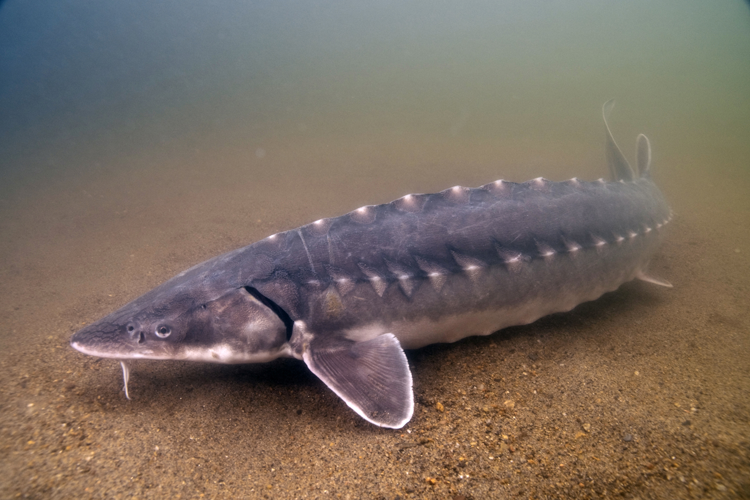Are stricter regulations in the Delaware River needed to save the sturgeon, or do anticipated costs to water customers in Philadelphia outweigh the benefits? PWD looks at the science behind a proposed EPA rulemaking.
 Shortnose Sturgeon Credit: Robert S. Michelson, Courtesy of NOAA.gov
Shortnose Sturgeon Credit: Robert S. Michelson, Courtesy of NOAA.gov
In late-December 2023, the Environmental Protection Agency (EPA) proposed a change to water quality standards in the Philadelphia portion of the Delaware River.
These new rules aim to increase the levels of dissolved oxygen—which fish need to breathe—to protect the Atlantic Sturgeon, an endangered species of fish that swim up the Delaware to spawn and lay their eggs. Without a doubt, the current population of sturgeon is a testament to how far we’ve come since the 1972 Clean Water Act began transforming polluted waterways into steadily improving habitats for many kinds of aquatic life.
So, what’s the problem? A big factor impacting dissolved oxygen levels in the river is the discharge of wastewater treatment plants located in the Delaware River basin. Ammonia, a component of treated wastewater, depletes oxygen in the water, and PWD is by far the largest contributor to the Delaware River as the provider of wastewater services to more than 2 million people.
To reduce the ammonia coming from our treatment plants and meet the proposed oxygen standards, Philadelphia is looking at a potential $3 billion price tag for new construction projects at our wastewater facilities. While these investments may improve conditions for some fish, they would not reduce bacteria levels in the Delaware River or make swimming safer.
Without significant financial support from the state or federal government, that cost will be passed on to customers through higher water bills for years to come. PWD estimates the EPA’s proposed regulations will cost customers an additional $22.17 per month on water bills, not $1.50 per month as calculated by EPA. That amounts to over $265 in new costs for water customers each year.
What can customers do?
The public can provide comments about the proposed regulation changes through the EPA website no later than February 20, 2024.
PWD shares the goal of protecting sturgeon and improving the ecological health of the Delaware River. This summer, construction begins on a new $70 million treatment facility that will reduce oxygen-depleting ammonia on an efficient scale and at a reasonable price. But before we spend big, it is our responsibility to examine the science behind the regulations, weigh the increased cost of water for all Philadelphians, and ask whether increased oxygen levels are the key to protecting sturgeon. A new position statement posted on PWD’s website addresses:
- What we can learn about the health of the sturgeon population in the Delaware River from thousands of juvenile fish that have been collected and measured since 2009.
- Whether “ship strikes” from large shipping vessels in the Delaware River are a greater impediment to sturgeon than dissolved oxygen levels.
- Why sturgeon health factors in New York’s Hudson River—a river with higher dissolved oxygen levels—are similar to those in the Delaware River.
- The net ecological benefits and trade-offs of building new wastewater treatment facilities that will greatly increase energy usage and the emission of greenhouse gases.